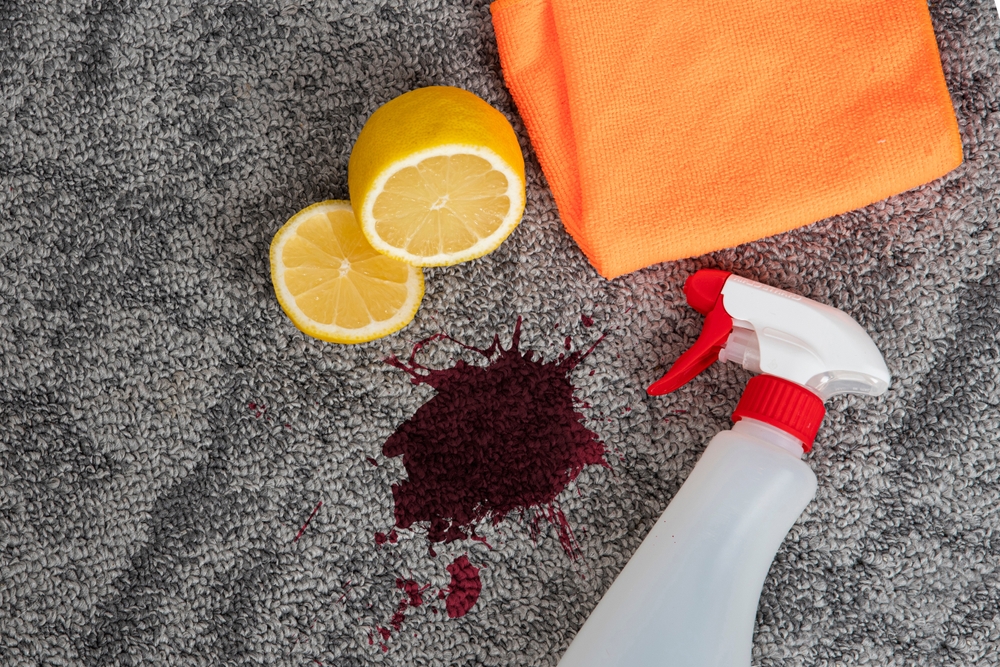The Ultimate Guide to Effective Carpet Stain Removal

A pristine carpet contributes significantly to the overall aesthetics and comfort of a living space. However, accidents are inevitable, and stains can quickly mar the beauty of even the most meticulously maintained carpets.
The key to maintaining a fresh and immaculate carpet lies in understanding the nuances of different types of stains and employing appropriate removal techniques. In this comprehensive guide, we will delve into various common types of stains and provide insight into effective stain removal methods, ranging from notorious red wine spills to pesky pet accidents.
1. Red Wine Stains
Red wine spills are notorious for leaving behind stubborn, dark stains on carpets. Immediate action is crucial to prevent the stain from setting in. Begin by blotting the excess liquid using a clean, white cloth or paper towels. Avoid rubbing, as it can push the stain deeper. Mix a solution of water and mild dish soap and gently apply it to the stained area using a cloth. Blot the area again, then rinse with water and blot until the stain is gone.
2. Coffee and Tea Stains
Coffee and tea spills can quickly turn into unsightly brown stains. Start by blotting the excess liquid with a clean cloth. Prepare a mixture of white vinegar and water in equal parts and apply it to the stain. Blot with a cloth, rinse with water, and blot again until the stain disappears. For stubborn stains, consider using a commercial carpet cleaner, following the manufacturer’s instructions.
3. Pet Accidents
Pet accidents are common and can lead to both stain and odor issues. Begin by blotting up as much of the liquid as possible. Next, apply a mixture of water and white vinegar to the stained area, followed by a layer of baking soda. Let it sit for a few hours before vacuuming. If the odor persists, enzymatic cleaners specifically designed for pet stains can be highly effective.
4. Grease and Oil Stains
Grease and oil stains can be particularly challenging. Begin by blotting up the excess grease using paper towels. Avoid spreading the stain further. Sprinkle baking soda or cornstarch over the stain to absorb the grease, and let it sit for several hours. Vacuum the area and then treat with a grease-fighting dish detergent mixed with water. Blot and rinse thoroughly.
5. Ink Stains
Ink stains require a delicate touch. Blot the stain gently to avoid spreading the ink. Apply rubbing alcohol to a clean cloth and dab at the stain, moving from the outside towards the center. Replace the cloth as it becomes ink-soaked. Continue until the stain disappears. Rinse with water and blot dry.
6. Blood Stains
For blood stains, prompt action is crucial. Blot the stain gently with a cloth soaked in cold water. Mix a tablespoon of salt into two cups of cold water and apply it to the stain. Blot with a clean cloth and repeat as necessary. Hydrogen peroxide can also be effective, but use it cautiously on colored carpets as it may cause fading.
Conclusion
Maintaining a spotless carpet requires not only regular maintenance but also knowing how to tackle various types of stains effectively. By understanding the nature of stains and employing the appropriate removal techniques, you can extend the life and beauty of your carpet.
Whether dealing with red wine spills, coffee stains, pet accidents, or other common mishaps, the ultimate guide to effective carpet stain removal equips you with the knowledge to keep your living space clean, vibrant, and inviting for years to come.





